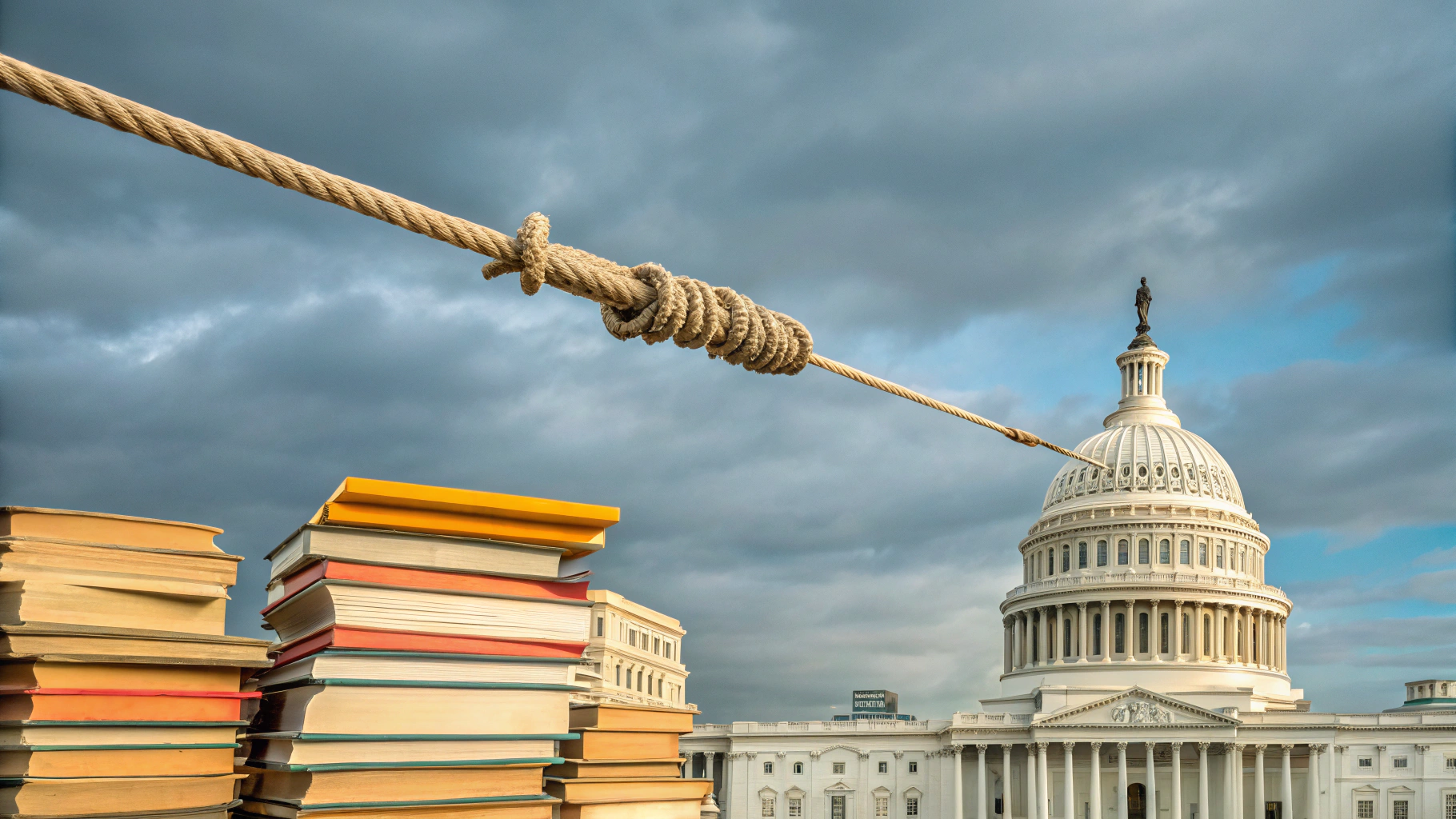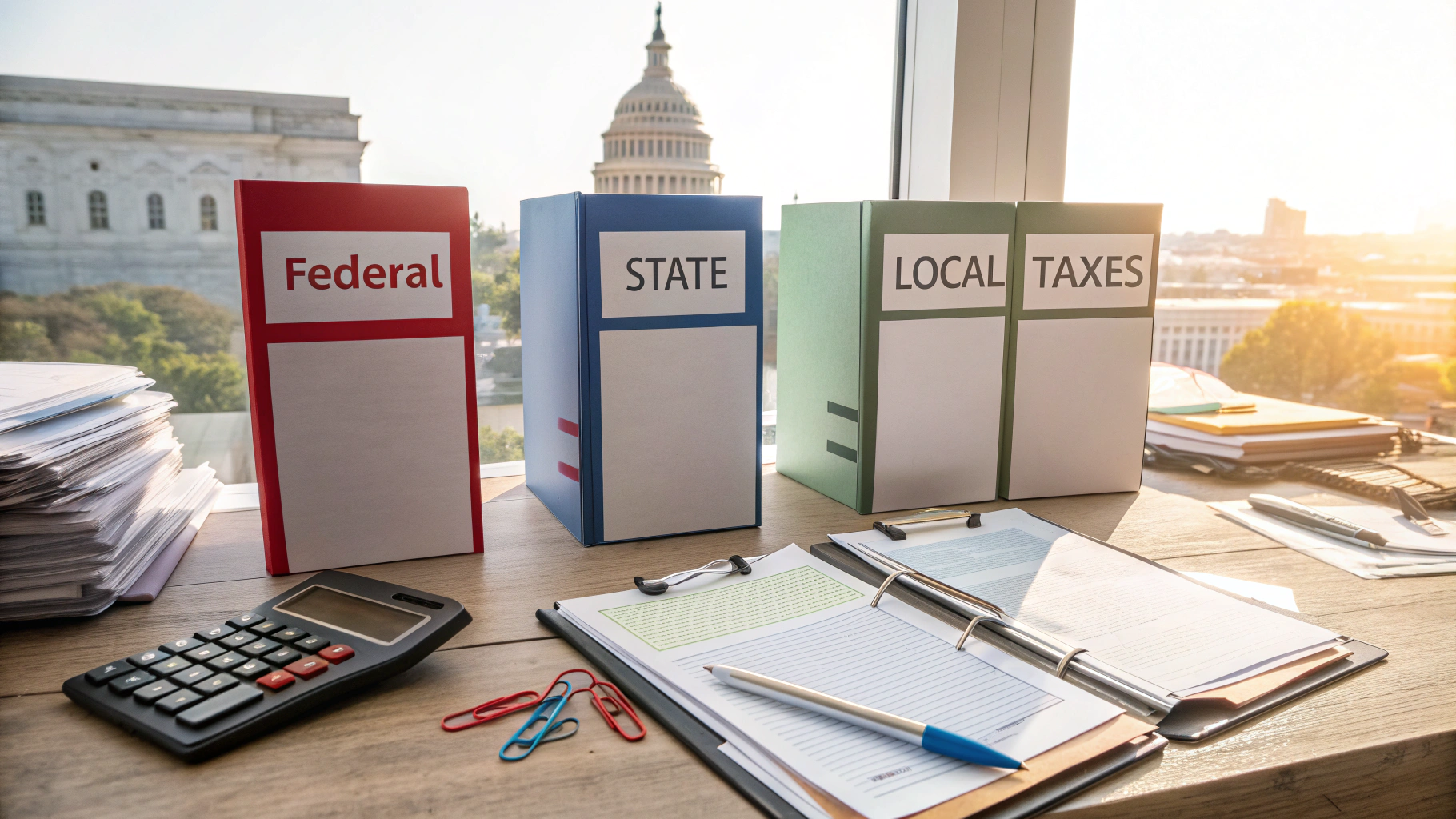Federalism in the U.S. is like a never-ending tug-of-war over education policy. States usually call the shots, but the feds love to swoop in with their laws, messing things up beautifully. You get a wild mix of standards and funding that leaves many kids in the lurch. The constant battle for control can lead to confusion, and frankly, kids often take a backseat in this political game. Stick around to see how this chaotic dance plays out in real-time.

Federalism in education is a bit like a tug-of-war game, where the national and state governments pull on opposite ends of the rope, each trying to assert control over a system that really ought to be about the kids. The definition is simple: it's the distribution of authority and responsibility between the national and state governments.
Federalism in education resembles a tug-of-war, with national and state governments vying for control over kids' learning.
Historically, it's been all about states calling the shots, with the federal government lurking in the background, only stepping in when absolutely necessary. However, things have shifted over the years. The dual authority model ensures that states possess the primary responsibility for public education, yet the federal government can influence education through initiatives and regulations.
Enter the No Child Left Behind Act in 2001. This legislation kicked federal involvement into high gear, making it a big player in education policy. Fast forward to 2015, and along comes the Every Student Succeeds Act, which decided that states could take the wheel again, scaling back federal oversight.
It's a classic see-saw effect, and it's left states with significant autonomy to tailor their educational approaches. Each state has its own way of doing things, which sounds great until you realize it leads to a patchwork of educational policies and disparities in funding. Education federalism often results in a situation where some kids get exceptional education while others are stuck in under-resourced schools. The federal government tries to throw money at the issue, but it's like trying to put a Band-Aid on a gaping wound. Sure, they set national standards and offer cash transfers to help, but does that solve the problem? Not really.
And let's talk about accountability measures. They've been controversial, to say the least. Some argue they infringe on state autonomy while others say they're necessary to keep schools honest. This dynamic reflects the ongoing influence of federal mandates that aim to close achievement gaps among various student subgroups.
It's a balancing act, one that reflects ongoing debates about who should really be in charge. The reality is, federalism shapes education policy in the U.S. in ways that can be both beneficial and frustrating. It's a complicated dance, and unfortunately, the kids often get lost in the shuffle.
Frequently Asked Questions
What Are the Historical Roots of Federalism in U.S. Education?
The historical roots of federalism in U.S. education? Well, they're messy. The Constitution doesn't even mention education. States took the reins, and the feds were like, "Sure, go ahead."
It took a while for Uncle Sam to step in, but post-WWII, things changed. The G.I. Bill? Game changer.
Fast-forward to the Civil Rights era, and boom! More federal involvement, with laws pushing for equity and desegregation.
It's been a rollercoaster of control ever since.
How Do State Education Policies Differ Across the U.S.?
State education policies are a mixed bag. Some states have rigorous standards, while others just wing it.
Local districts get to play by their own rules, which means kids might learn vastly different things.
Funding? Good luck with that—some districts are flush, while others scrape by.
Teacher training varies too, with some states making it easy, and others, well, not so much.
It's a wild ride, and not all students are on the same rollercoaster.
What Role Do Local Governments Play in Education Policy?
Local governments play a huge role in education policy.
They're the ones running the show—managing schools, hiring staff, and tweaking curricula. Funding? Mostly from property taxes, which can create some serious inequality.
They adapt state policies to fit local quirks, like attendance rules and assessments.
And let's not forget community involvement. Local leaders seek feedback and form partnerships to tackle challenges.
It's a juggling act, but they're the ones on the ground making it happen.
How Does Federal Funding Influence State Education Systems?
Federal funding is like a lifeline for state education systems, covering about 8% of total K-12 spending.
Sure, it's not a huge slice of the pie, but it targets specific needs. Think Title I for low-income kids or IDEA for students with disabilities.
When states fall short, federal cash jumps in—especially during crises like the pandemic.
This funding nudges states to align with federal guidelines, keeping them on a tighter leash than they might like.
What Are Recent Changes in Federal Education Laws Impacting States?
Recent changes in federal education laws are shaking things up.
There are new digital accessibility rules—because who doesn't love a good tech upgrade?
Then there's the overtime salary threshold hike for college workers.
And let's not forget the Biden administration's attempt to ease student loan burdens.
Transparency regulations are on the table too.
With all this, states are left scrambling, trying to keep up while still managing their own classroom chaos.






